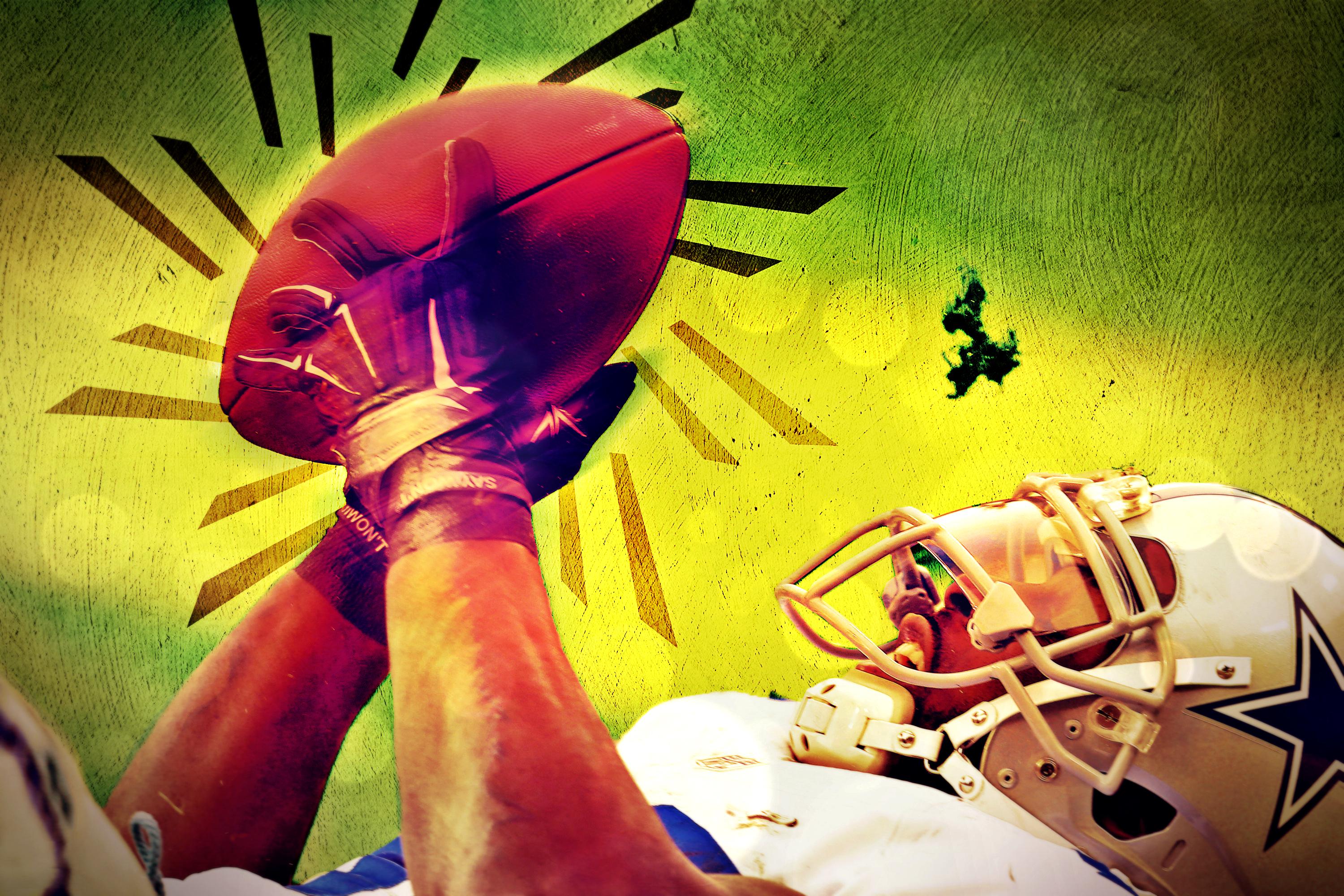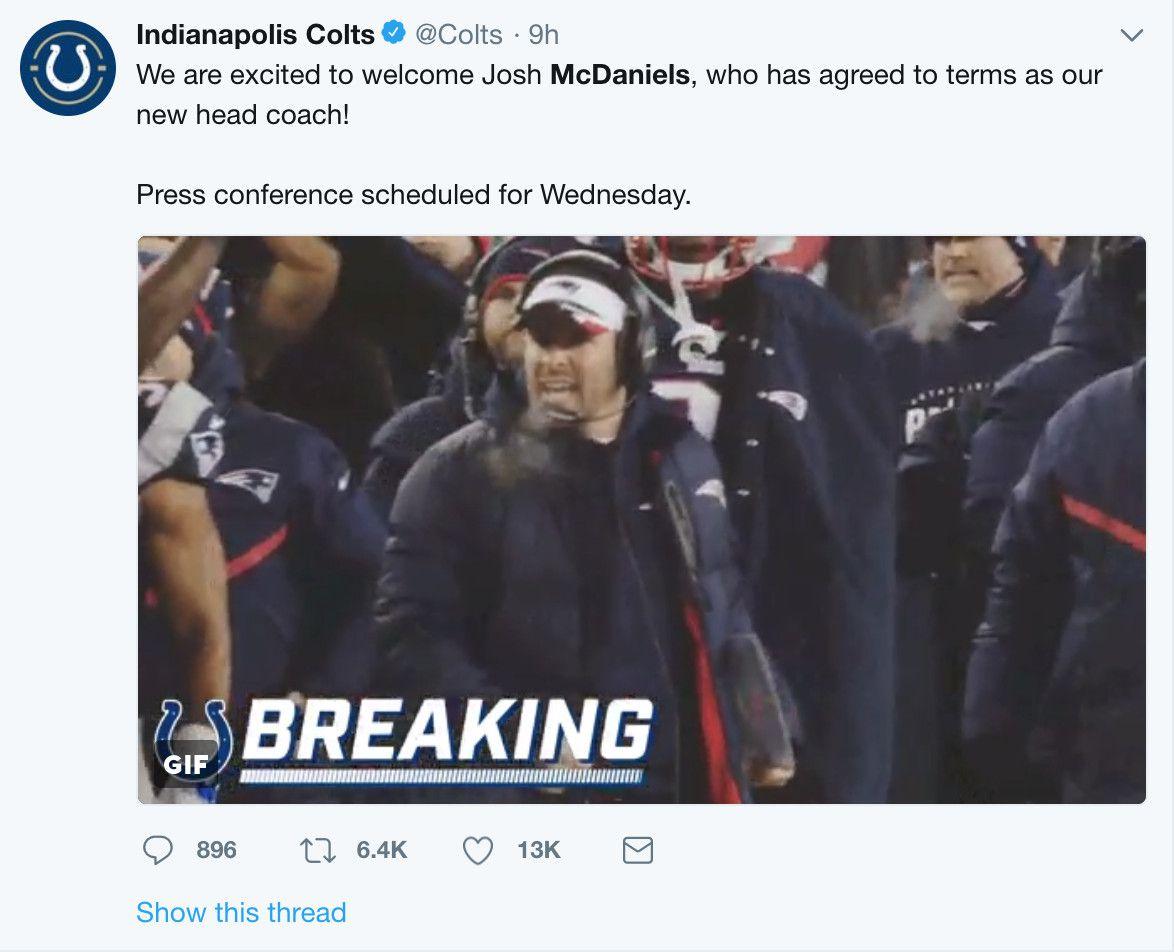
Meet the men of the NFL’s competition committee, or as they may soon be known, the people responsible for defining what a catch is:
Rich McKay (chairman) – president, Atlanta Falcons
John Mara – owner, New York Giants
Mark Murphy – president, Green Bay Packers
Ozzie Newsome – general manager, Baltimore Ravens
Mike Tomlin – head coach, Pittsburgh Steelers
John Elway – general manager, Denver Broncos
Sean Payton – head coach, New Orleans Saints
Stephen Jones – Jerry’s son (and chief operating officer), Dallas Cowboys
When the league considers a rule change, it turns to the competition committee for a solution. The committee will meet after this week’s NFL combine to finalize proposals, which can cover everything from the technology allowed on the sideline to, yes, the definition of a catch. The proposals that make it out of committee are sent to the NFL owners, who will vote on whether or not to adopt the changes at their owners meeting March 25-28. Here are some of the proposals the committee is considering, along with what would happen if they are implemented.
The Proposal: An Update to the NFL’s Rules About What Constitutes a Catch
How We Got Here: There isn’t a proposal yet, but the committee has acknowledged that the league’s inability to consistently define a catch is a problem. As Mara told ESPN’s Kevin Seifert, the competition committee unanimously agrees that a new catch rule needs to acknowledge that the Dez Bryant catch against Green Bay in 2014 and Calvin Johnson’s catch against the Bears in 2010 should both count. He’s “not sure we’re unanimous” on the Jesse James non-catch that cost the Steelers a win against the Patriots last season (though I think I know which side Mike Tomlin is on).
That’s not to say the rule was misinterpreted in those instances, but rather that a new rule is needed to ensure those plays would be ruled catches.
What This Would Fix: The Ringer’s Rodger Sherman dove deep on this topic in August for those who truly want to explore this wormhole. The issue often boils down to referees making judgment calls based on vague guidelines of when a receiver becomes a runner, mixed with a baffling rule about receivers maintaining possession heading to the ground.
“Plays where guys seem to make the catch and then make a football move with it, I think most of us agree those should be completions,” Mara said. “Now it’s just a question of coming up with the right language.”
What This Could Break: The wrong language could be even more infuriating. If the “going to the ground” rule is eliminated, it could create more fumbles. All those incompletions that don’t happen in the end zone or along the sideline would become live balls, and the defense would be in a better position to recover them. That could infuriate fans even more.
The Proposal: Let Teams Hire Coaches From Playoff Teams During the Postseason
How We Got Here:

What This Would Fix: This rule would help ensure another NFL team doesn’t get the McDaniels treatment. It would prevent assistant coaches hired prematurely from leaving their jobs, but the McDaniels situation is unlikely to happen again even without a rule change. The more immediate effect is a tweak to the hiring process. As things are now, teams make handshake deals with assistants during the postseason to become the head coach, and then those coaches dodge any and all questions on the topic until their season ends while assembling a coaching staff in the shadows. It won’t change a lot on the surface, but now assistant coaches will no longer have to keep open secrets.
What This Could Break: McDaniels’s heart every time he watches SportsCenter in January and hears about “The McDaniels Rule.”
The Proposal: Change Pass Interference From a Spot Foul to a 15-Yard Penalty
How We Got Here: The NCAA adopted this rule in 1984, and it’s worked out well, and former NFL VP of officiating Mike Pereira has advocated for the league to adopt this change in the past. NFL Network’s Judy Battista reported that this change is a long shot to pass this year, but that won’t stop it from floating in the public consciousness. From here on out, every ticky-tacky pass interference call that gives an offense a free 40 yards may contribute to growing fan criticism that convinces the NFL to make a change down the line.
What This Would Fix: Questionable pass interference calls can vault a team into scoring territory and swing games. Take this play from the AFC championship game, where Jags corner A.J. Bouye was flagged for a 32-yard penalty for excellent coverage on Pats wide receiver Brandin Cooks.
As football shifts to a pass-friendly game, controversial DPI calls that bail out offenses have come into focus. If this proposal were in effect last year, Jacob Feldman of SI estimates it would have meant 1,618 fewer pass interference yards. Pass interference penalties assume that the receiver was going to make the catch, which is quite generous for a judgment call that can swing a drive and possibly a season.
What This Could Break: We won’t know until this happens, because coaches would change techniques and decision-making, but we can look to the college game for some guidance. There is some incentive for egregious pass interference on Hail Marys to end games, like this play Alabama made against Mississippi State last season. NFL officials already put away their whistles on Hail Mary plays, but, as Bill Barnwell argued at Grantland, there is reason to believe downfield pass interference could be a bigger issue at the NFL level than in college, even with the 15-yard cap in place. This could be fixed by adding more nuance to the rule, like a flagrant pass interference penalty, but that also introduces more opportunities for refs to make fans angry.
The Proposal: A College-Style Targeting Rule
How We Got Here: Davante Adams, Joe Flacco, and Coby Fleener were some of the players who suffered scary hits to the head this season. After a year of watching football through our fingers, the brutal hits that knock players unconscious are becoming more and more disgusting.
What This Would Fix: In college, defenders penalized for targeting are subject to a replay review, and, depending on the review, they may be ejected. (If the play occurred in the second half, they’re suspended for the first half of the following game.) A targeting rule could make defenders even more aware of helmet-to-helmet hits and the use of the crown of their helmet.
What This Could Break: Unfortunately, stopping those hits may not be as simple as punishing the defenders who make them. Steelers safety Mike Mitchell summarized how many defenders feel in a postgame rant where he argued that defenders, particularly safeties, are unfairly scapegoated for issues that are intrinsic to the sport.
We’re always the last line of defense. … If the ball is in the air and a man jumps or a man ducks his head, how do you want me to readjust my body? You cannot do it … I’m going to mess around and get hurt trying to protect an offensive player because he’s running an over route. ... That happened two years ago. I’m not joking at all. Andy Dalton threw a ball to Tyler Eifert two years ago. Tyler Eifert had to dive for it. I was aiming for his gut, but if he don’t dive he don’t get hit in the head. That’s 50 grand out of my pocket though because Andy throws a bad ball. Make that make sense.
Mitchell’s comments show that litigating hits is a complicated task, and the sport itself might have to be reimagined to eliminate them.

